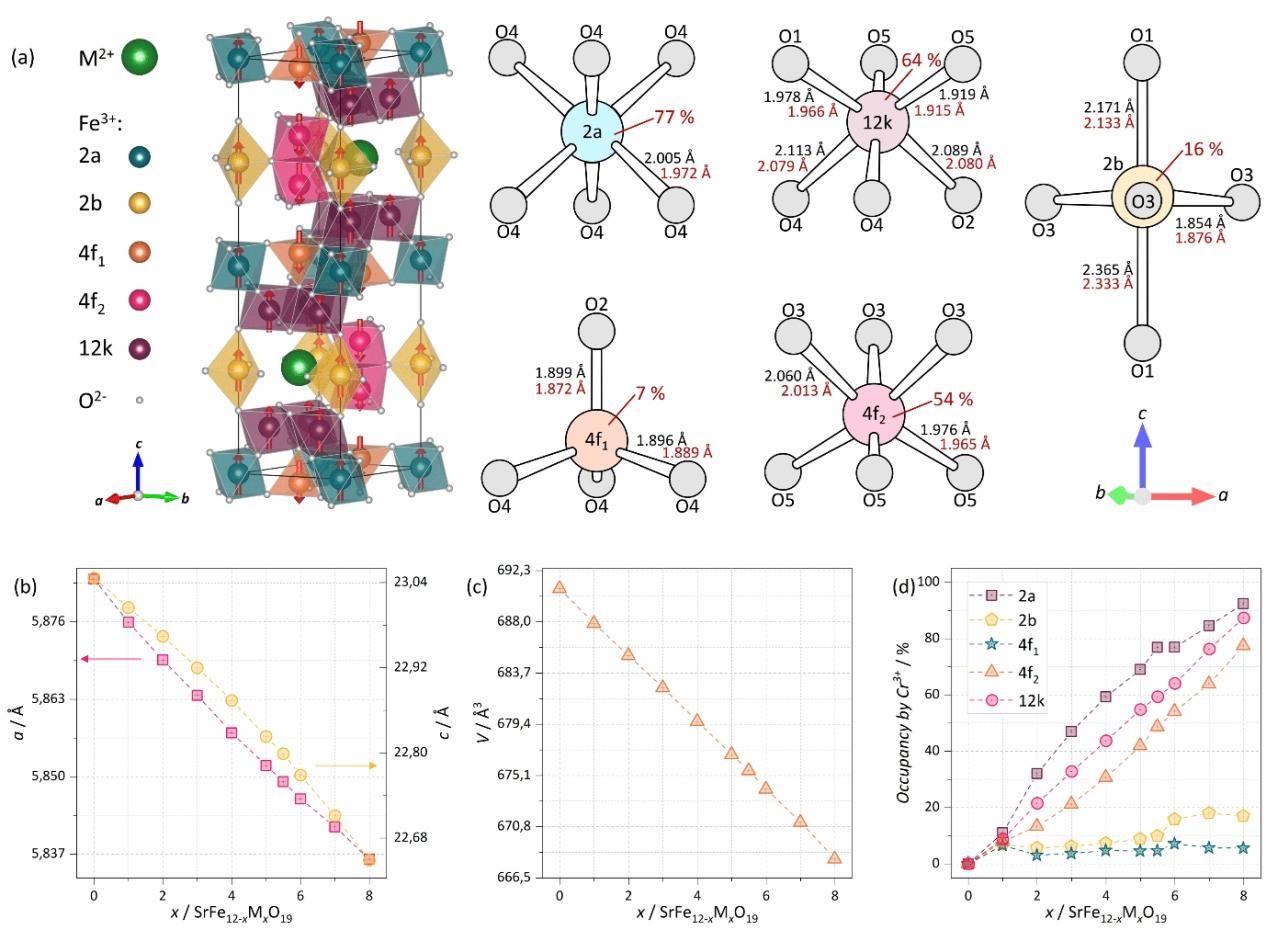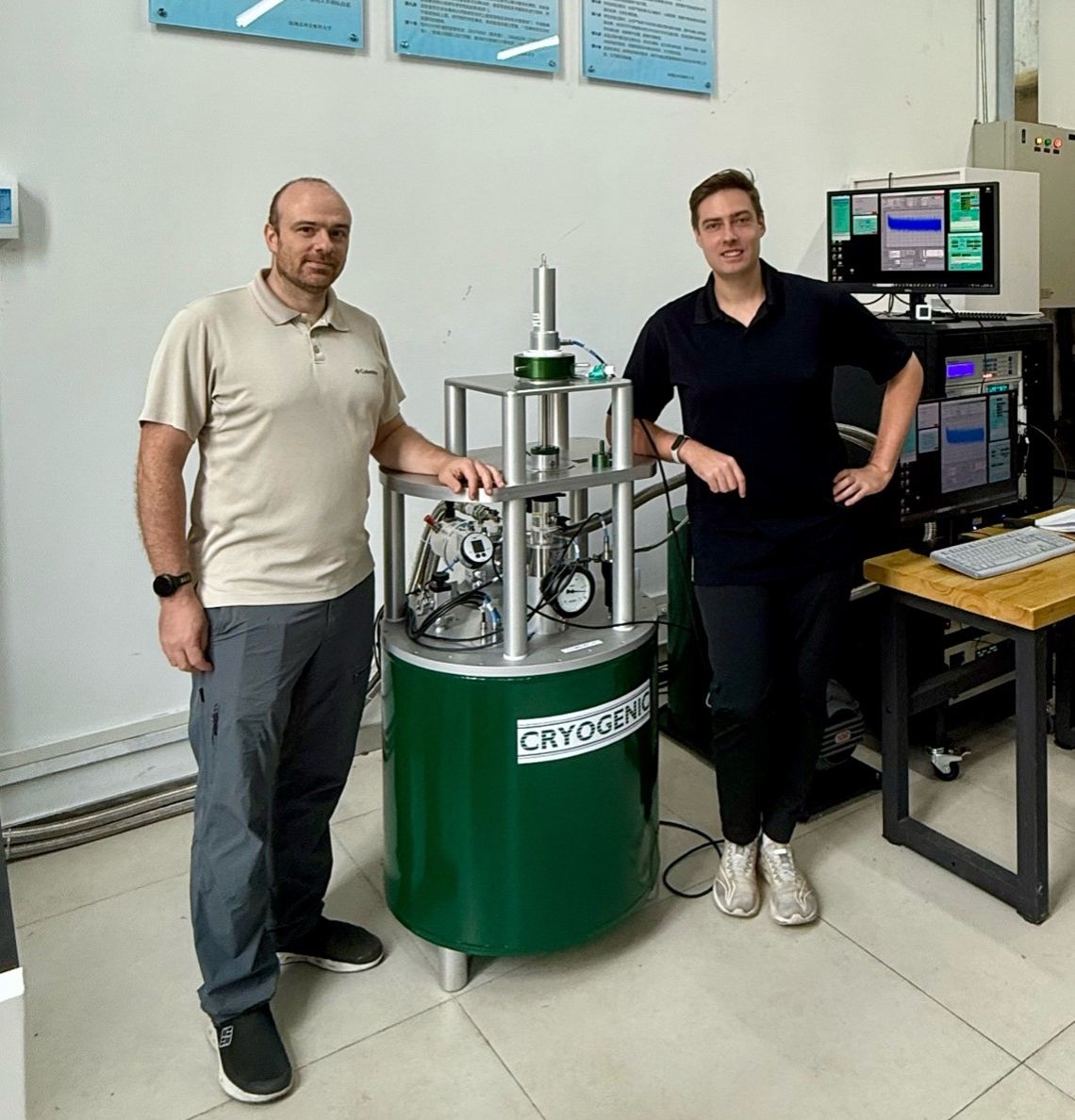Recently, a research team from the Faculty of Materials Science at Shenzhen MSU-BIT University published an innovative study, listing SMBU as the first affiliation. The paper, titled “Submicron Particles of Cr-substituted Strontium Hexaferrite: Anomalous X-ray Diffraction Studies, Hard Magnetic Properties, Millimeter-wave Absorption, and Research Prospects” (Mater. Horiz., 2025, 12, 5893–5907, DOI: 10.1039/d5mh00425j), appeared in the Royal Society of Chemistry’s journal Materials Horizons (Q1; Impact Factor: 10.7). The lead authors are Professor Lev Trusov and Senior Lecturer Evgeny Gorbachev. In this study, the authors report for the first time the synthesis and characterization of single-domain hexaferrite SrFe₁₂₋ₓCrₓO₁₉ (x = 0–8) particles.

Figure: Structural characteristics of chromium-substituted hexaferrites, including unit cell parameters, atomic coordinates, and site occupancies.
The team developed an optimized synthesis route, applying an improved citrate–nitrate homogenization method to obtain single-domain submicron hexaferrite particles with high chemical uniformity. This represents a significant breakthrough, as the low reactivity of chromium oxide has long posed a major challenge for such syntheses.
Advanced structural analysis was then carried out to improve the magnetic properties of the samples. Using anomalous X-ray diffraction (AXRD) at the Swiss Light Source (Switzerland), the researchers revealed that Cr³⁺ ions preferentially occupy octahedral sites normally taken by Fe³⁺ ions—an insight that explains the observed magnetic enhancements. Since Cr³⁺ and Fe³⁺ have nearly identical X-ray scattering factors, such differences cannot be detected with standard laboratory diffractometers. The experiments demonstrated remarkable improvements: when chromium substitution reached x = 5.5, the coercivity increased to 13.9 kOe, more than three times higher than undoped hexaferrite (x = 0). At the same time, the natural ferromagnetic resonance (FMR) frequency at room temperature rose to 129 GHz. Compared with other doped hexaferrites (e.g., SrFe₁₂₋ₓAlₓO₁₉, SrFe₁₂₋ₓGaₓO₁₉), chromium-substituted hexaferrites exhibited a narrower resonance absorption linewidth, making them especially promising for high-frequency electronics applications up to 130 GHz.

Main authors of the paper, Professor Lev Trusov (left) and Senior Lecturer Evgeny Gorbachev (right) of the Faculty of Materials Science, pictured beside the magnetic property research apparatus.